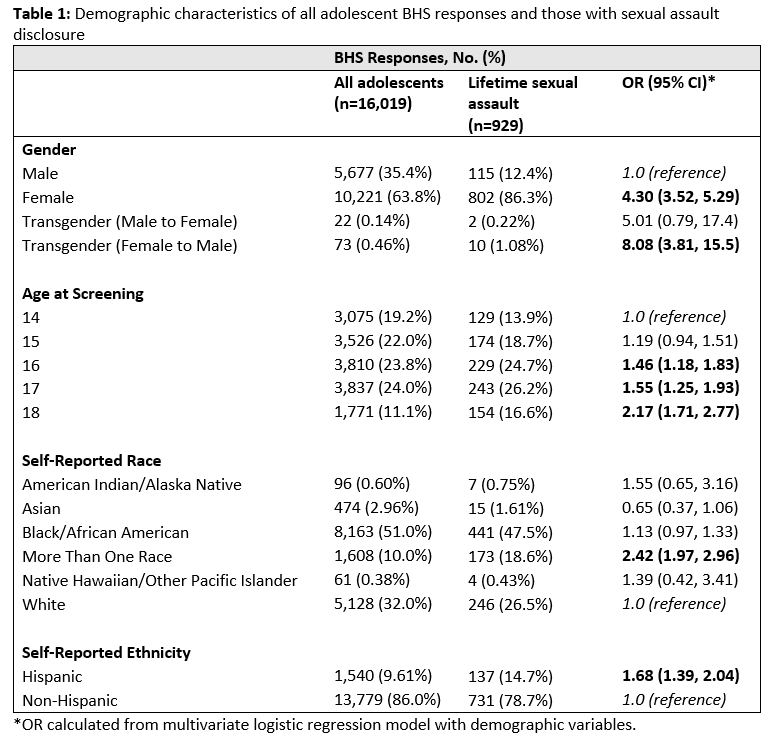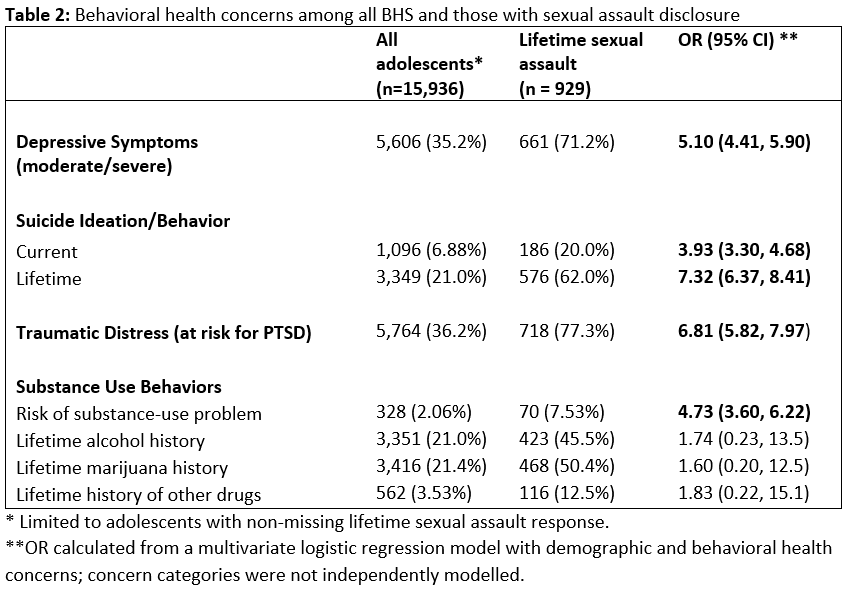Adolescent Medicine: General
Adolescent Medicine 1
451 - Sexual Assault Disclosure During Emergency Department Adolescent Behavioral Health Screening
Friday, April 28, 2023
5:15 PM - 7:15 PM ET
Poster Number: 451
Publication Number: 451.1
Publication Number: 451.1
Julia B. Sabrick, Childrens Hospital of Philadelphia, Philadelphia, PA, United States; JOEL A. FEIN, Perelman School of Medicine at the University of Pennsylvania, Media, PA, United States; Jungwon Min, Children's hospital of Philadelphia, Philadelphia, PA, United States; William O.. Quarshie, Children's Hospital of Philadelphia, Philadelphia, PA, United States; Leah Brogan, Children's Hospital of Philadelphia, Philadelphia, PA, United States; Polina Krass, Children's Hospital of Philadelphia, Philadelphia, PA, United States; Barbara H. Chaiyachati, Children's Hospital of Philadelphia, University of Pennsylvania, Philadelphia, PA, United States

Julia B. Sabrick, MPH (she/her/hers)
Clinical Research Coordinator
Childrens Hospital of Philadelphia
Philadelphia, Pennsylvania, United States
Presenting Author(s)
Background: Childhood sexual assault is known to be associated with numerous adverse physical, emotional, and psychological outcomes. The emergency department (ED) offers a unique opportunity to identify and connect adolescent survivors to appropriate resources. Demographic characterization of adolescent survivors and associated behavioral health concerns can help to clarify the utility and applicability of this approach for that purpose.
Objective: To describe demographic and behavioral health concerns of adolescents who disclosed lifetime history of sexual assault via a self-administered, computerized behavioral health screening tool and compare to those adolescents who did not endorse lifetime sexual assault. We hypothesized that adolescents who endorse lifetime sexual assault will be older and have higher odds of reporting a behavioral health concern and/or substance use.
Design/Methods: We conducted a cross-sectional assessment of behavioral health screenings completed within the ED of an urban Mid-Atlantic region pediatric hospital from January 2013 through March 2020. 16,019 patients, age 14 to 18, completed a computer-based, self-administered behavioral health screening, including demographics, as part of clinical care. Lifetime sexual assault was assessed by one question: “Has anyone ever forced you to do something sexual?” We examined demographics and behavioral health concerns by lifetime sexual assault using multivariate logistic regression models.
Results: 929 (5.8%) of the adolescents endorsed lifetime sexual assault. By gender, females had over 4 times the odds of reporting lifetime sexual assault compared to males (OR 4.30; 95% CI: 3.53, 5.29). Older youth, ages 16, 17, or 18, had increased odds of disclosure compared to 14 year olds (see Table 1). Adolescents who endorsed lifetime sexual assault had increased odds of moderate or severe depressive symptoms (OR 5.10; 95% CI: 4.41, 5.90), lifetime suicide ideation (OR 7.32; 95% CI: 6.37, 8.41), symptoms of traumatic distress (OR 6.81; 95% CI: 5.82, 7.97) and substance use risk behaviors (OR 4.73; 95% CI: 3.60, 6.22) (see Table 2).
Conclusion(s): Female and older adolescents have higher odds of reporting experience of sexual assault. Adolescents who disclose lifetime sexual assault have higher odds of reporting behavioral health symptoms including depressive symptoms and suicidality. A computer-based self-administered clinical tool in the ED can identify those adolescents as a first step for appropriate response, including connection to resources.


